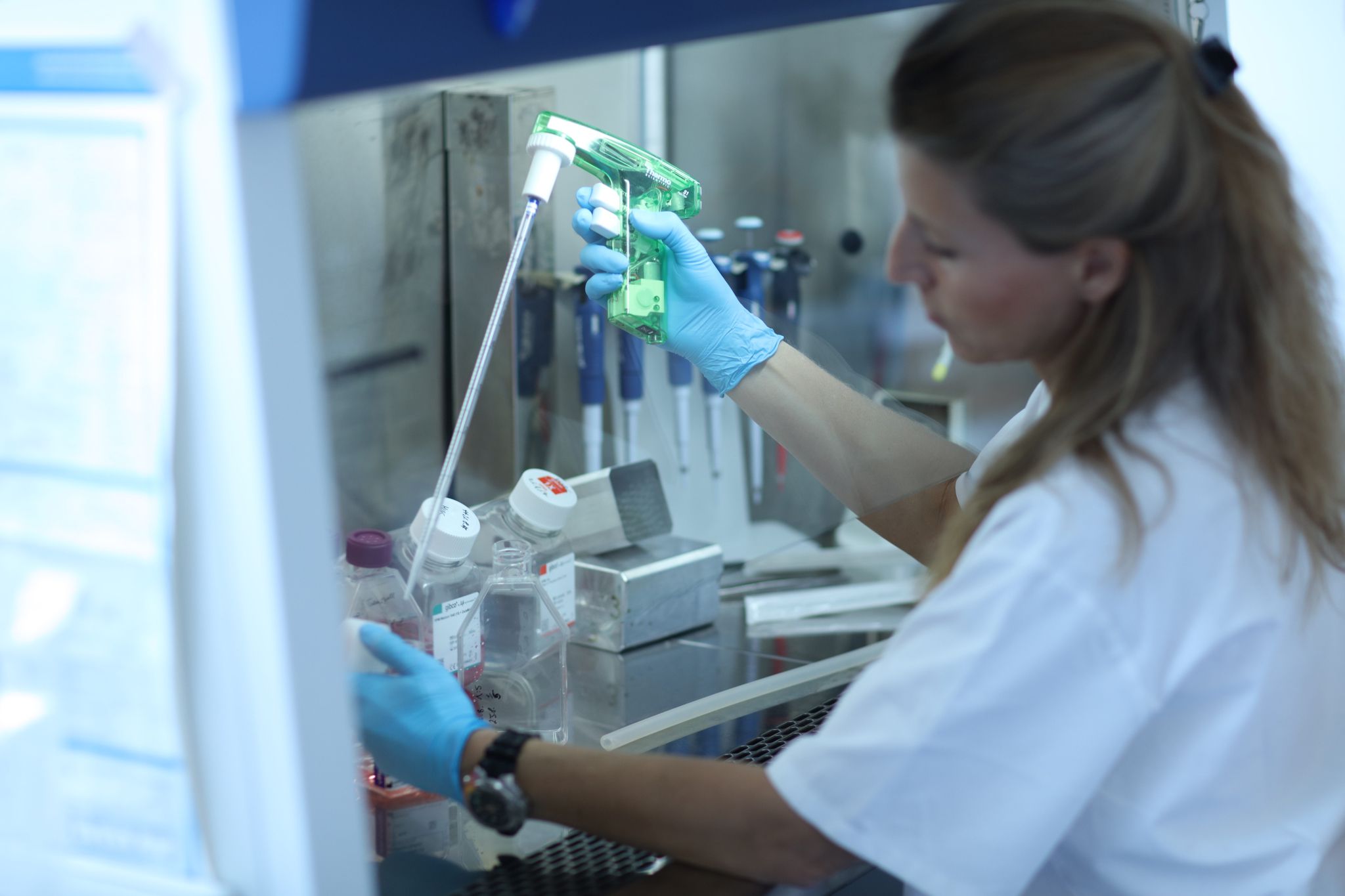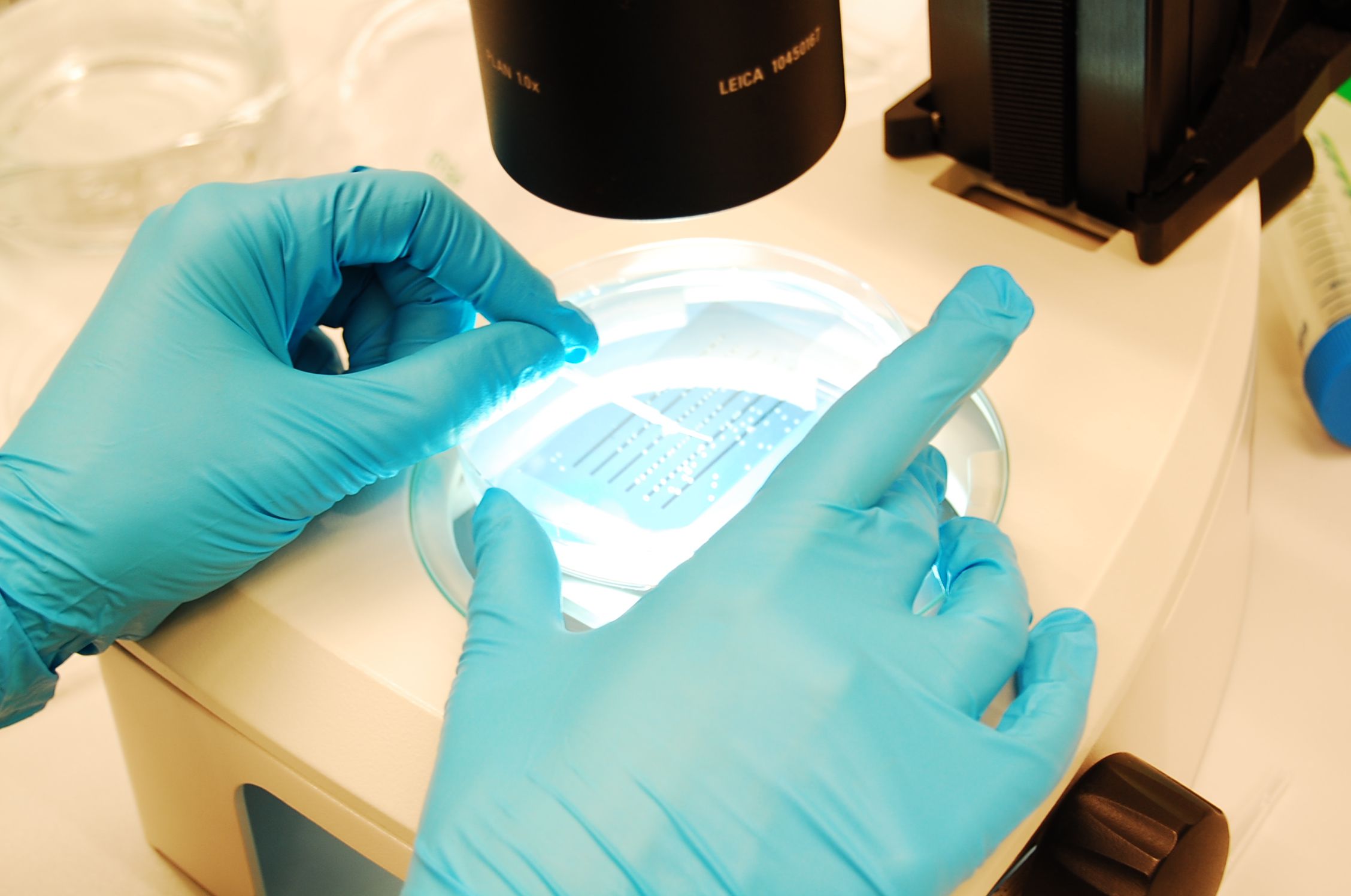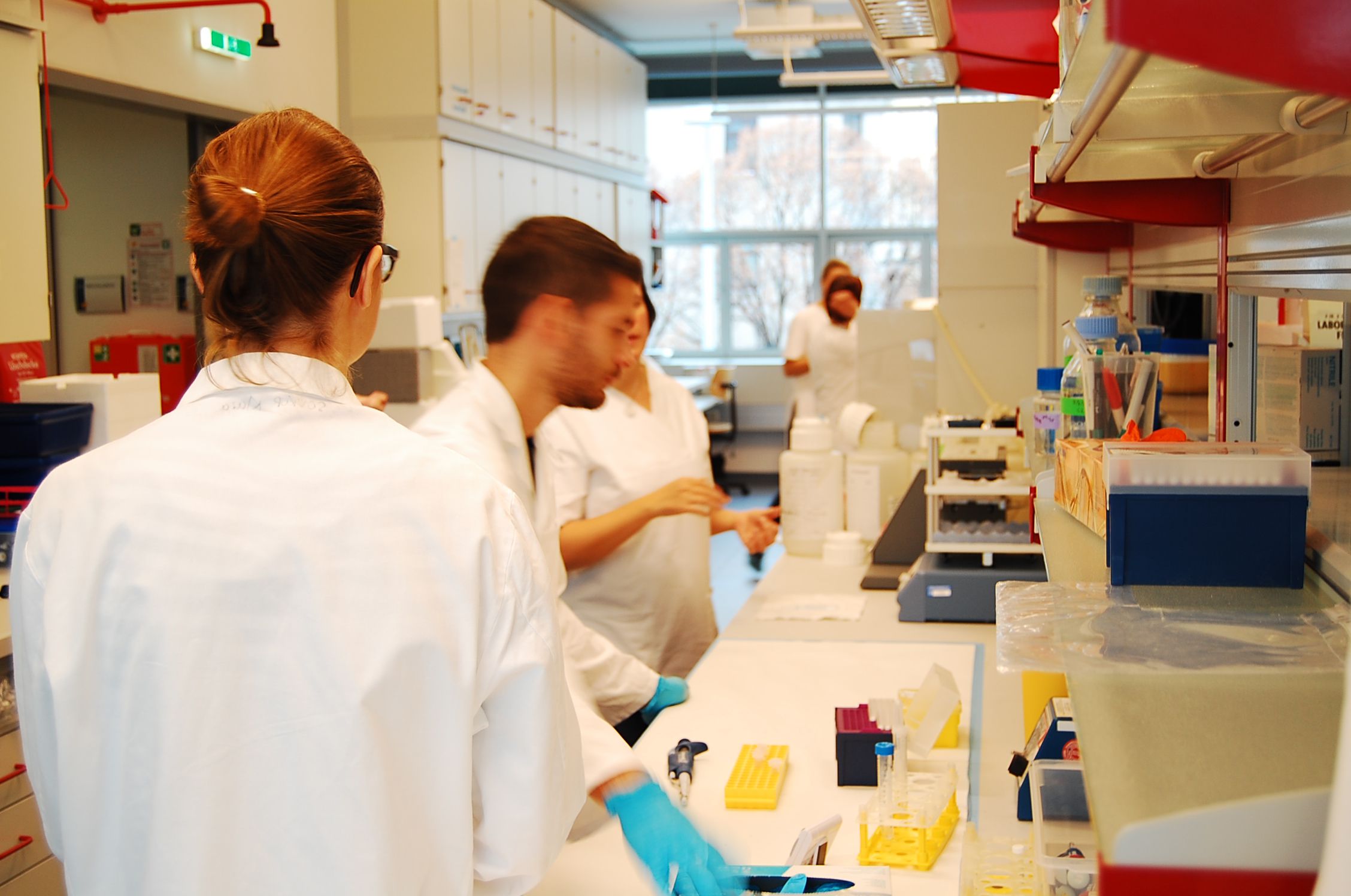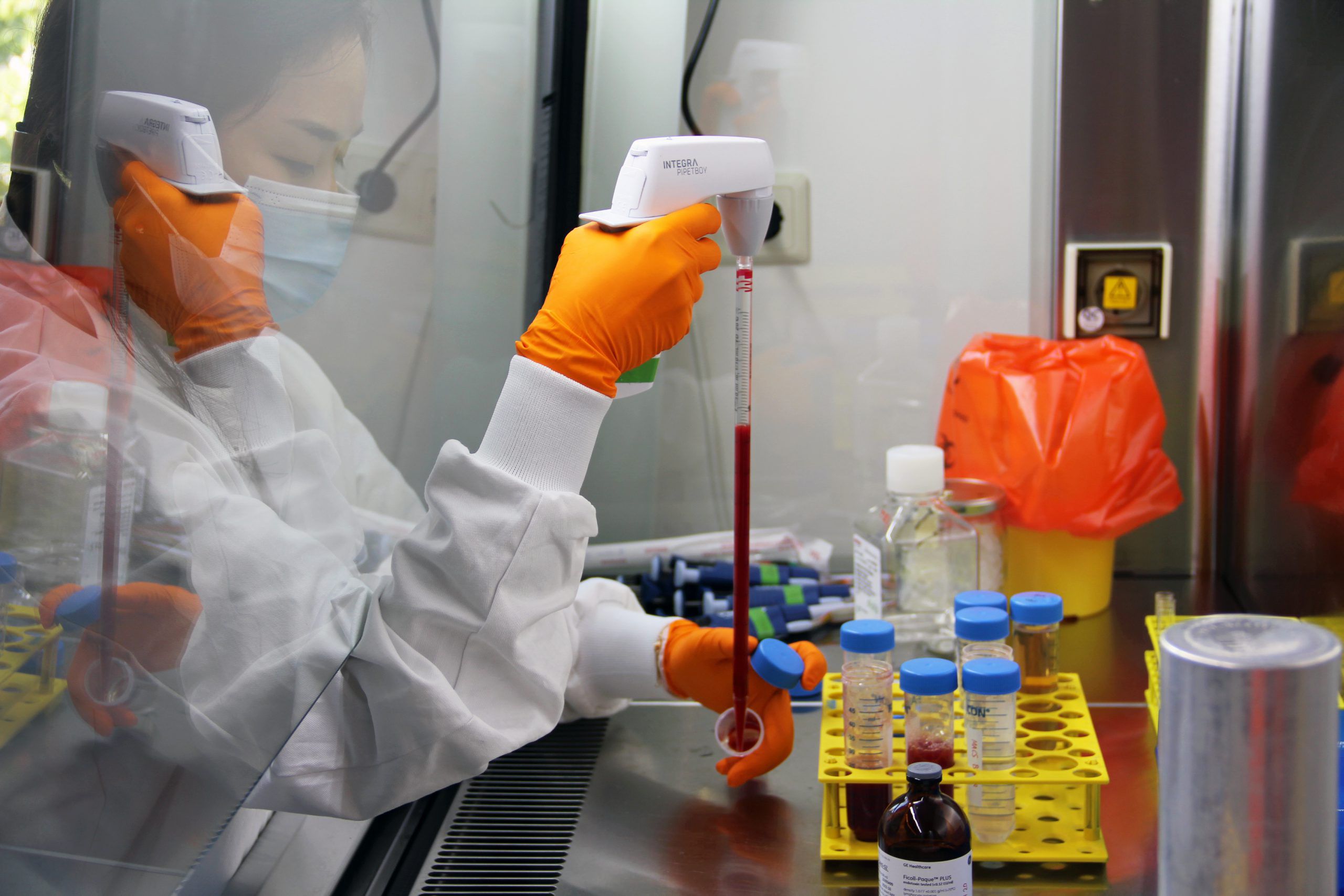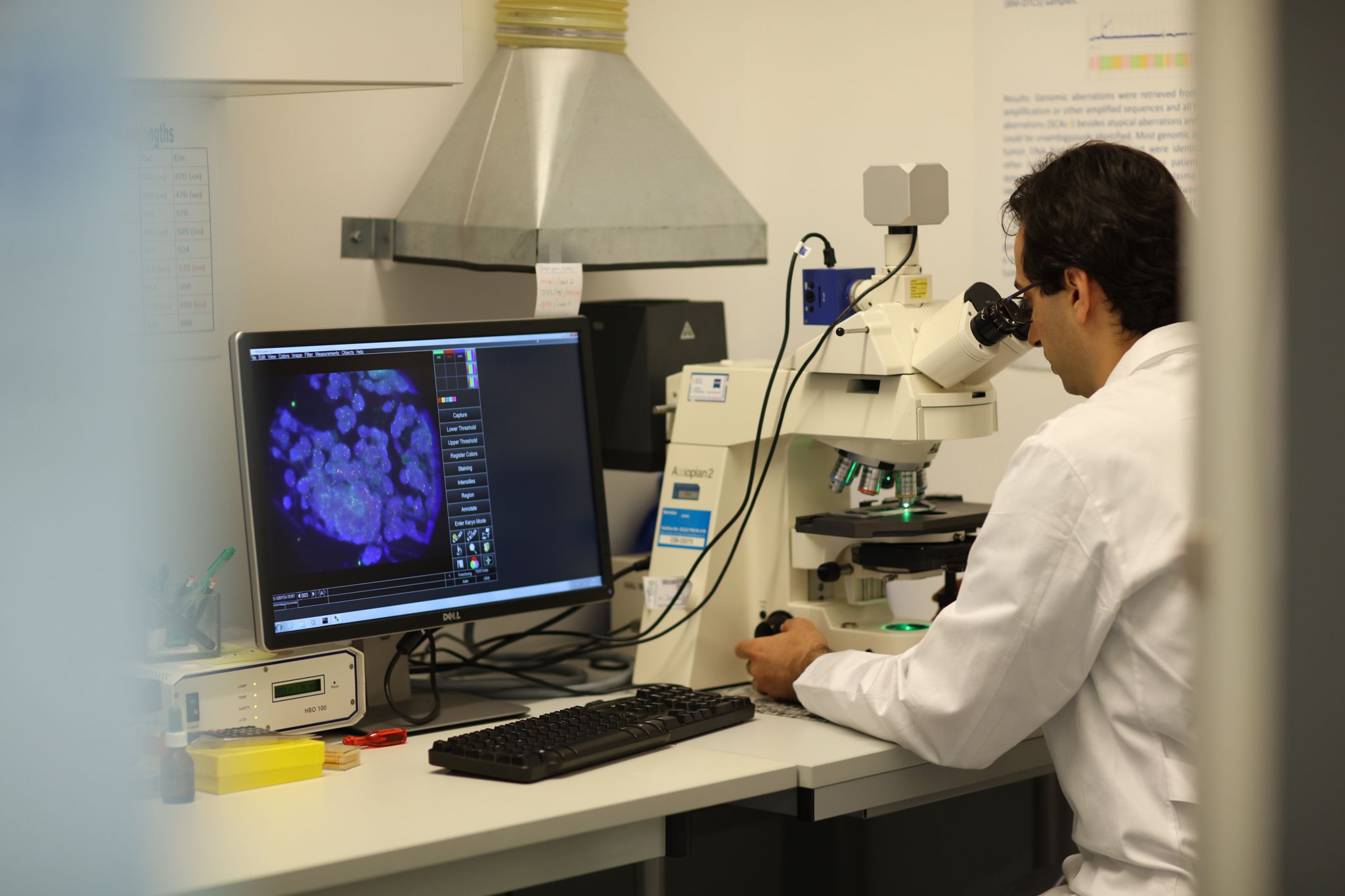Diagnostik
Leukämien
- Verdacht auf Leukämie – unklare hämatologische Erkrankung
- Akute Lymphatische Leukämie (ALL)
- Akute myeloische Leukämie (AML)
- Chronische myeloische Leukämie (CML)
- Myeloproliferative Neoplasien (MPN/MPE) inkl. Eosinophilie
- Myelodysplastische Syndrome (MDS)
- Hypereosinophiles Syndrom/Chronische Eosinophilenleukämie (HES/CEL)
Lymphome
- Verdacht auf Lymphom
- B-& T-Zell Lymphome
- Non-Hodgkin Lymphom (NHL)
- Lymphoblastisches Lymphom (B- und T-LBL)
- Burkitt Lymphom (BL)
- Diffus großzelliges B-Zell Lymphom (DLBCL)
- Follikuläres Lymphom (FL)
- Mantelzell Lymphom (MCL)
- Chronische lymphatische Leukämie (CLL)
- Prolymphozytenleukämie (PLL)
- Morbus Waldenström
- Lymphoplasmozytische Lymphome (LPL)
- Multiples Myelom (MM)
- Monoklonale Gammopathie unklarer Signifikanz (MGUS)
- Weitere Tumor-Entitäten auf Anfrage
Andere Erkrankungen des blutbildenden Systems
- Myelodysplastisches Syndrom (MDS)
- Polycythämia vera (PV)
- Anämien
- Fanconi-Anämie (FA)
- Hereditäre Sphärozytose
Solide Tumoren
- Neuroblastom
- Nephroblastom
- Knochen- und Weichzeilsarkome, u.a. Rhabdomyosarkom, Ewing-Sarkom, Osteosarkom
- Lebertumoren
- INFORM-Pilotstudie/Register
- Gastrointestinale Stromatumoren (GIST)
Immunstatus
- Immunstatus allgemein
- Nachweis von virusspezifischen Zellen (bei Patienten und bei Spendertestung)
- Follow-up nach Stammzelltransplantationen bei Hämato-onkologischen Erkrankungen und Immundefekten
Allogene Stammzelltransplantation (Organtransplantation)
- Nachweis von virusspezifischen Zellen (bei Patienten und bei Spendertestung)
- Follow-up nach Stammzelltransplantationen bei Hämato-onkologischen Erkrankungen und Immundefekten
Nachweis und Monitoring von Viren
- DNA-Viren: CMV, EBV, HSV1/2, VZV, HHV6/7/8, PVB19, AdV, JCV, BKV
- RNA-Viren: INFA/B, EV, PIV 1/2/3, NV, RSV, hRV, CoV (229E, OC43, SARS-CoV-2)
- Nachweis von virusspezifischen Zellen (bei Patienten und bei Spendertestung)
- Follow-up nach Stammzelltransplantationen bei Hämato-onkologischen Erkrankungen und Immundefekten
Immundefekte
- Primäre und sekundäre Immundefekte
